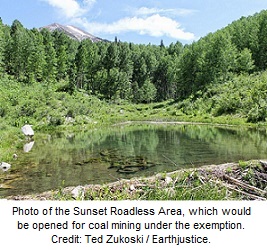 Back in 2003, Michael Herz and I wrote an article calling for the creation of an online, word searchable database of environmental impact statements that had been prepared under the National Environmental Policy Act (NEPA) and its state equivalents. These EISs are written at great expense and contain massive amounts of observational data about air and water quality, species abundance, soil conditions, traffic levels, and much else. Then they’re put on the physical or digital shelf, forgotten and basically impossible to research.
Back in 2003, Michael Herz and I wrote an article calling for the creation of an online, word searchable database of environmental impact statements that had been prepared under the National Environmental Policy Act (NEPA) and its state equivalents. These EISs are written at great expense and contain massive amounts of observational data about air and water quality, species abundance, soil conditions, traffic levels, and much else. Then they’re put on the physical or digital shelf, forgotten and basically impossible to research.
Such a database actually went online September 2021. It captured more than 26,000 NEPA documents, including more than 12,600 downloadable pdf’s, and was used by 5,500 active users, with more than 78,000 visits. While it lasted, it was a fantastic research tool. But it ran out of money and was pulled down, for now, in May 2024.
The database, called NEPAccess, was created at the University of Arizona with funding from the National Science Foundation. Hopes that it would continue and be enlarged rose when the Fiscal Responsibility Act of 2023 (the bill that raised the debt ceiling) also enacted Section 110 of NEPA, which required the Council on Environmental Quality (CEQ) to conduct a study “on the potential for online and digital technologies to address delays in reviews and improve public accessibility and transparency” and authorized $500,000 for the study. CEQ released that study in July 2024. It had many good recommendations for using technology to modernize the environmental review process and it said positive things about NEPAccess but it said nothing about extending its funding or creating anything like it elsewhere.
This was a missed opportunity. Much effort goes into reinventing wheels – trying to recreate information that was compiled years earlier, or searching for data that only exists in old EISs. That is one reason the NEPA process costs so much and takes so long.
Northwestern University’s Transportation Library holds print copies of most EISs prepared before 2012. Most were digitized by Google and made available through HathiTrust, and some are on Google Books. EPA maintains a database of EISs. The City of New York has a database of EISs prepared under the City’s own processes.
However, the search capabilities of these databases are limited. In contrast, NEPAccess is full text searchable. It can also be searched by geographic location, enabling researchers to determine what NEPA studies have been performed near the particular location they are studying. The Department of Energy has provided funds for the Pacific Northwest National Laboratory to create some kind of NEPA database but from its website it is not yet clear what it will contain.
All that is missing to revive the NEPAccess site, bring it fully up to date and allow its expansion is funding. Sadly, after all these years, that is still lacking.

Michael Gerrard
Michael Gerrard is Andrew Sabin Professor of Professional Practice and founder and faculty director of the Sabin Center for Climate Change Law. He is former chair of the faculty of the Columbia Earth Institute and of the American Bar Association's Section of Environment, Energy and Resources. He practiced environmental law full-time in New York from 1979 to 2008, and has written or edited 14 books on environmental law.



